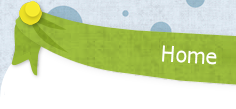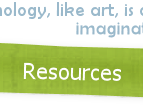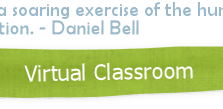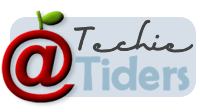Html files are just normal text files with the extension .htm, .html, or .shtml. You can think of html as learning how to "talk" to the computer in its language, so it will display what you want. We will be using Text Wrangler in our class to create the html files. Let's take a look below at basic html:
<html>
<head>
<title>The title of your webpage goes here</title>
</head>
<body>The body text goes here. These are the words that appear on your webpage.</body>
</html>
You will begin the document by typing <html>. This communicates "Attention Computer, I am speaking html to you." You always end the document by communicating "Attention Computer, I have completed talking to you in html." This is done using </html>. Numerous html code components are open and shut in the same manner.
A great place to get started learning code is online such as W3Schools and Lisa Explains It. Once you have a basic understanding of code, you can simply test it out online such as with the Tryit Editor on W3.
Of course the Internet is always changing and the new web standard is actually HTML5. Don't worry this won't involve too much of a transition. In fact, You can quickly see the new (and eliminated) code using an HTML5 Tag Reference sheet.
What are some of your favorite html/html5 codes you have tried?
Sunday, January 29, 2012
Sunday, January 8, 2012
 Web Design and Web 2.0
Web Design and Web 2.0
 When you think back to a time without the Internet, it is sometimes hard to remember for some and for others the Internet has always been here. Have you ever wondered what was the first communication between computers? lo. Yes, "lo" was the first transmission in October 1969! The actual word was "login" but the system crashed after the first two letters were transmitted. Sometimes a crashing failure is just the beginning of a whole new world!
When you think back to a time without the Internet, it is sometimes hard to remember for some and for others the Internet has always been here. Have you ever wondered what was the first communication between computers? lo. Yes, "lo" was the first transmission in October 1969! The actual word was "login" but the system crashed after the first two letters were transmitted. Sometimes a crashing failure is just the beginning of a whole new world!Being an 80's teen, I can definately remember life without the Internet especially as mainstream as it is now-a-days. Can you believe that only 1% of information flowing through two way communication in 1993 was from the Internet? By 2000 this had increased to 51% which was right before the term "web 2.0" was coined by Tim O'Reilly in 2004. This marked the beginning of a dramatic shift in the Internet. By 2007 this number was increased to 97%. Wow, what a difference!
This shift from a read only web, Web 1.0, to a read write web, Web 2.0, has made a dramatic impact on web design. In the past, the ability to design websites was limited to those with the ability to code using language such as html. When the shift of the Internet first started, software was being produced to allow people to create websites with no code experience. People with experience in common software such as PowerPoint could have a website. Other software such as FrontPage and Dreamweaver was produced for even more control over the design elements.
This Techie Tiders website is a great example of how the shift of the Internet has opened the world of web design to anyone. Using blogs, wikis, and numerous other online tools allow even people with just basic computer knowledge to have a presence on the web. Even social networks such as Facebook are being used for websites.
How else has this Internet shift helped web design? Just a few years back you would need to purchase software to create dynamic text, edit photos, and so on. Now you have numerous sites from which to choose. A great example of this is Photoshop software. There are dozens of site that now allow you to edit photos or create your own images such as Pixlr. There are tons of other examples. What other ways has Web 2.0 had an effect on web design?
Tuesday, January 3, 2012
 Welcome to Web Design!
Welcome to Web Design!
Are you excited about getting started on the new semester? Have you ever felt "out of the loop" with technology? Ok maybe not as "out of the loop" as the walkman man! LOL
While we discover the world of web design, you will be immersed in everything geeky. Ok, not everything, but you will discover a world of possibilities outside of Facebook and gaming.
Have you heard of the 365 day project? Basically it is a project where you document your year through daily pictures. Numerous sites even have easy ways to post such as Flickr, and others have themes to help you come up with ideas. Some people have taken the idea and added their own twist, such as Paula Naugle. She is posting a picture of one tweet from the day that helped her learn and connect with others.
We are going to have our own twist to this project. You will be in this class for 44 days, so we will run a 44 day techie project. Each day you will write a blog post including a picture of the day. This picture will be of something techie from a screen shot of a awesome site to a graphic you have created. These blog posts can be in our online classroom or you can choose your own platform such as Posterous or Blogger.
I'm looking forward to seeing things through your eyes:)
While we discover the world of web design, you will be immersed in everything geeky. Ok, not everything, but you will discover a world of possibilities outside of Facebook and gaming.
Have you heard of the 365 day project? Basically it is a project where you document your year through daily pictures. Numerous sites even have easy ways to post such as Flickr, and others have themes to help you come up with ideas. Some people have taken the idea and added their own twist, such as Paula Naugle. She is posting a picture of one tweet from the day that helped her learn and connect with others.
We are going to have our own twist to this project. You will be in this class for 44 days, so we will run a 44 day techie project. Each day you will write a blog post including a picture of the day. This picture will be of something techie from a screen shot of a awesome site to a graphic you have created. These blog posts can be in our online classroom or you can choose your own platform such as Posterous or Blogger.
I'm looking forward to seeing things through your eyes:)
Subscribe to:
Posts (Atom)





















